Jaina vestiges in Pudukkottai
- Prof. Subramanian Swaminathan
e-mail: sswami99@gmail.com
December 2008

Pudukkottai, a district of Tamilnadu has a great Jaina tradition dating back to pre-Christian era.
The archealogical evidences show that Jainism flourished here for more
than 1500 years, from 3rd century BC to till about 13th centure AD.
There are a number of Jaina vestiges found scattered throughout the
district, like images and fragments of images, ruins of temples and
monastries and inscriptions.
In this district, is located the highest number of centrally protected Jaina relics/monuments in Tamilnadu.

Sittannavasal
A natural cavern called Ezhadipattam, with 17 stone beds and numerous
inscriptions, which includes the famous 3rd century BC Tamil Brahmi
inscription, was an abode of Jain ascetics from 3rd century BC for their
penances.
pudukkottai.org/...
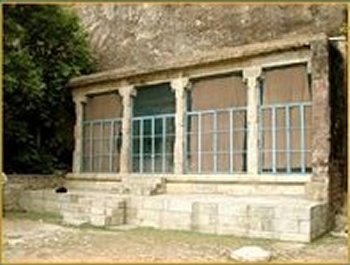
The Jaina cave temple called Arivar-koil with its internationally
renowned paintings, the earliest Jain paintings of India, dates back to
a period ealier than the 9th century AD.
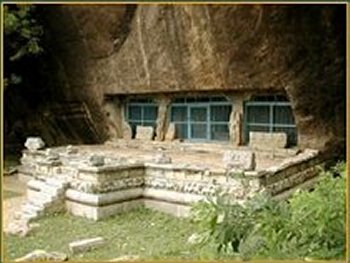
Samanar-kudagu situated on the Mela-malai of Narttamalai Hills, has a Jaina cave-temple, converted into a Vishnu shrine later.
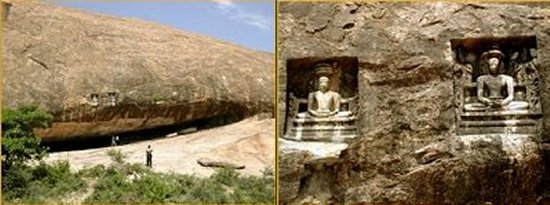
Alurutti malai, Ammachatram
A natural cavern, with stone beds. There are two Tirthankara relief sculptures carved on the facade and inscriptions.
To the west of the tank Pallikkulam, on a 25ft boulder is a relief
sculpture of Thirthankara and two inscriptions. Near the tank can
be found a number of broken Jaina idols.
Bommadimalai
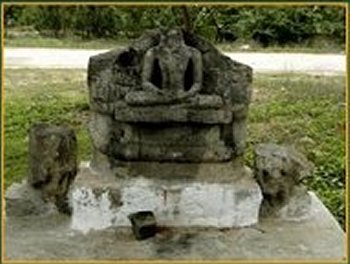
A mutilated Tirthankara idol near the road, 100 meters south of the Bommadimalai with an inscription on the Bommadimalai rock.
Karuppar malai, Mailaapatti
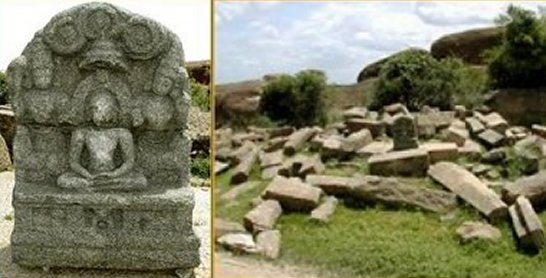
Basement of a ruined Jaina temple and a Tirthankara image and inscriptions
Lakshmanpatti

Remains of a ruined Jaina temple and a Tirthankara image in Kanakampatti. Probably, the temple had a prakaram of laterite stone.
Puttambur
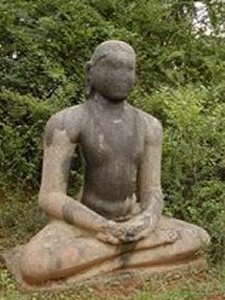
Brick basement of a ruined Jaina temple callled Mottai Pillayar koil
with a Jaina Tirthankara idol and a broken sculpture. The
Tirthankara idol is about 4ft in height and sculpture fully in the
round.
Tenimalai
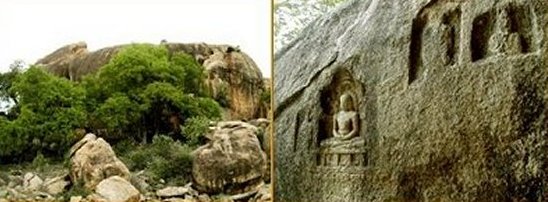
At Andar madam, a natural cavern on Tenimalai, there is a relief
figure of a Tirthankara on a big boulder. There are two important
inscriptions - one below the figure and another on a boulder.
Three Tirthankaras, seated in padmasana are canopied by triple umbrellas
and flanked by chauri bearers. According to the inscriptions, the
first was commissioned by Sricalla-Udaranaseruvotti.
Another inscription states an Irukkuvel chieftain gave pallichandam
for the maintenance of the monk, Malayadhwaja, performing penance
here. The place was in use till about the ninth century.
Thekaattur

A Jaina Tirthankara idol is seated on a pedestal. The idol is
presently worshipped by the local people as 'Samanakaali'. ASI has
erected a basement for the sculpture and protected it by providing
fencing.
Annavasaal
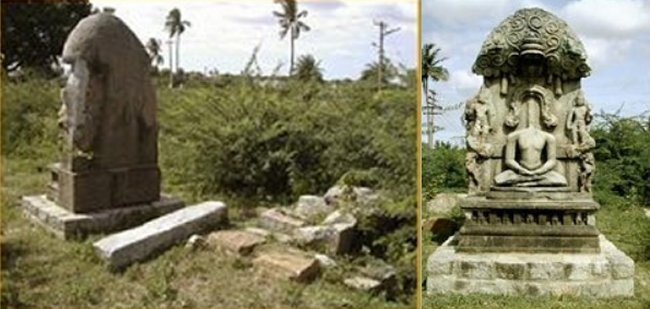
To the west of a tank, there is a Tirthankara, the head of which is
broken - a seated figure with attendants. There are also ruins of a
temple.
Sadayapparai

A Tirthankara, probably Adinatha, originally a relief sculpture now
exists as a sculpture in the round and is worshipped by the local
people. Known as Perunar killi, Cholaperumapani was a Jain centre
during the 9th-13th centuries.
A large inscription, now mostly defaced, datable to the reign of Sundara
Pandya I, informs the existence of a Jain temple, 'Kallaatruppalli' and
records pallichandam to the deity of Perunarkilli cholaperumpalli for
various offerings by the naattavar of Tenkavinadu.
Kudumiyamalai

A natural cavern on the western side of the hillock contains polished
stone beds. One of the beds contains an inscription in Tamil
Brahmi script of 2nd century AD.
Chettipatti (Samanar Kundu)
A structural temple, dedicated to a Tirthankara, is in ruins. Only
the basement foundation remains, with loose sculpture kept at the
site. Mahavira is seated on a pedestal. Parshvadeva with
smiling countenance, half closed elongated eyes, prominent nose and
curly hair arranged in small circles and the five hooded serpent canopy
illustrate exquisite Chola workmanship.
These partially carved individual sculptures of chauri bearers, a lion-
the mount of Ambika yakshi are other noteworthy sculptures.
A 10th century inscription identifies Dayapaiar and Vadiraya as two disciples on Matisagaracarya.
Kannangudi
A fine sculpture of Mahavira belongs to this village. The 11th
century image is seated on a simhasana in padmasana posture. The
semi-circular prabhavali, creeper design and triple umbrella, the
contemplative calmness of the face, the half-closed eyes, broad
shoulders and the sturdiness of the torso are beautifully depicted in
this carved relief.
Semapattur
Only a Tirthankara, a yakshi and a few lion based pillars found near the
Palliyurai tank are the relics of the Jain temple of this place.
The Tirthankara, seated in padmasana is a small figure, while Ambika
yakshi, also seated on a pedestal, is larger.
A 10th century inscription records that the yakshi sculpture was
commissioned by an offcial of Rajaraja Chola I, Jayankonda Chola
Muvendavelan of Kulamangalanadu. Some of the structural elements
have been used in the Hindu temples nearby.
Other places having ruins of Jaina temples/monastries
Mangathevanpatti - Melur (Thirumayam)
Melur (Satyamangalam) - Puliyur
Nattampannai - Nanjur
Alangudipatti - Tirupur
Alathur - Veerakudi
Annavasal - Kannangarakudi
Kaayamppatti - Valavampatti
Marudur
According to Mailai Seeni Venkatasami, the following places also have Jaina monuments / relics
Malayakkovil - Kunnandar koil
Thiruvarangulam - Viralur
Poovaalaikkudi - Keezhaththaaniyam
Thevar malai
Existence of such a large number of monuments shows that Pudukottai was
one of the most important Jaina centres in Tamilnadu, in the past.
|